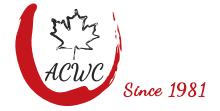About
A little history….
With excerpts from Michael Pinkus, judge and writer
The ACWC started back in 1981, founded by a staff writer for the Windsor Star, Brian Bannon who was assigned as their medical reporter, but also did a wine column on the side. It was run annually in Windsor, Ontario. “I started the All-Canadian as material for a newspaper story,” recalls Brian, “I invited as many Canadian wineries as I could find to send someone to Windsor to show their wines.” The original format was a walk around tasting and the judges “were about 100 local restaurateurs, LCBO staffers and members of local wine clubs … Only nine wineries showed up to the first one, all from Ontario” and the overall winner was a 1979 Riesling from Chateau des Charmes. In year two a Newark 1980 Gewurztraminer took top honours (Newark was to later become Hillebrand / Trius). Brian ran the competition for some 21 years, and in 2002 he gave the awards over to current awards organizer Bev Carnahan, who kept them going in Windsor until 2013 at which point she made the move to Prince Edward County.
“I felt this competition deserved a full-time home within a wine-region, Windsor is perfectly situated in the Lake Erie North Shore region … but in 2013 my husband and I were looking for a place to retire, but also wanted to 1) keep the competition alive and 2) have it held in a wine region, PEC seemed the logical choice to satisfy both; plus we loved it there.” Which explains why PEC is now home to one of North America’s longest running wine competitions.
The ACWC is open to all Canadian licensed wineries, cideries and meaderies and content must be grown and made in Canada. Invitations to the wineries are mailed out in late January (yes, still old school), at which time the on-line entry process is also uploaded.
Roughly 20 judges from across Canada are invited to join the judging panel. They are wine writers, Sommeliers, and professional wine judges from the Wine Judges of Ontario. Some judges have been with the competition for 20+ years, but there’s always a space for up-and-coming talent. Wines are scored using the 100 point system.
From approximately 50 categories, the awards will eventually settle into the typical Gold, Silver and Bronze assignments, but there is where this competition is unique. The top scoring wine in each category is awarded Double Gold, which will move it into the trophy lineup. The wines scoring below that top wine are then awarded Gold, Silver and Bronze by increments of 10%. (If Cabernet Sauvignon under $35 has 60 entries, then 6 will win Gold, 6 Silver and 6 Bronze). This is in a nutshell ‘skimming cream from the top’. Once the judges have made their selections, we will have 7 Trophies, signifying the Best of the Best for that year. They are:
White Wine of the year
Red wine of the year
Sparkling wine of the year
Fruit wine of the year
Mead of the year
Cider of the year
Dessert wine of the year

